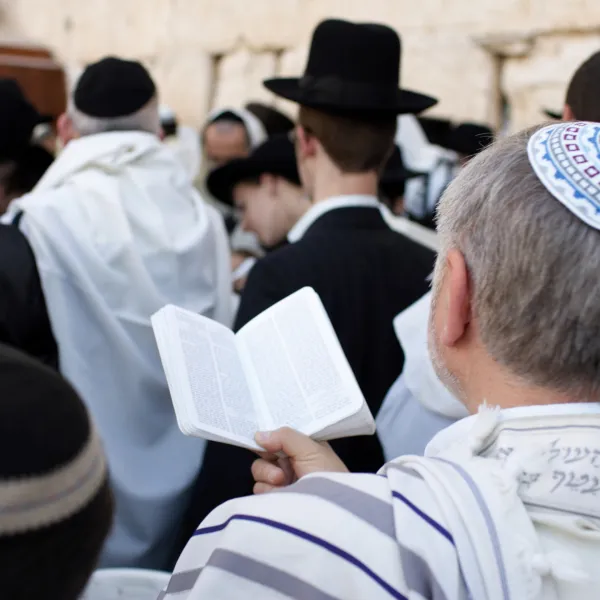Jewish Funeral Traditions & Etiquette
While most Jewish funeral traditions are the same around the world, there are some variations depending on one's heritage. For example, Ashkenazic Jews (those whose ancestors are from Eastern Europe) and Sephardic Jews (those of Spanish/Middle Eastern descent) have differing traditions around holidays, life cycle events and more. As such, let's start with a basic definition of a Jewish funeral.
Are you planning a religious funeral? Get emailed a free guide.
What is a Jewish Funeral?
A Jewish funeral differs in many ways from a Christian funeral and that of other religions and cultures. As such, Jewish funeral etiquette also differs. For instance, there is no viewing. To honor the deceased, the casket remains closed, with friends and family prohibited from seeing the person who has passed.
Before the Funeral
As a sense of respect, the deceased is not left alone from the time of death until the funeral. Volunteers from the Jewish community sit with the deceased, often reading psalms, until the burial.
Typically, the time between death and burial is not long. Traditionally a Jewish burial is supposed to take place within 24 hours of death. This is done in accordance with the Torah, sacred Jewish scripture, which says, "You shall bury him the same day.... His body should not remain all night." Today, outside of Orthodox communities, funerals rarely occur this quickly. However, the funeral should take place as soon as possible following the death.
Burials never take place on the Sabbath or holidays.
Before the deceased is buried, the person must be ritually washed. Those who volunteer to do this righteous task are members of a "chevra kadisha," or holy society. They are on call 24 hours a day. Men perform the ritual on males who have passed, and women do so for females. Once the deceased is washed, the person is clothed in a white linen shroud. Men also wear a "tallit," or prayer shawl. Some people are buried in a "kittel," a white garment worn on the High Holidays and sometimes at weddings.

The Funeral Service
As with traditional Jewish services, at a funeral some of the readings will be in Hebrew and some will be in English. Usually the rabbi will offer a brief explanation of the Hebrew portions of the service. It should be noted that a rabbi is not required to perform a funeral ceremony; any Jewish person can do so.
Music and flowers are typically prohibited. So while your instinct may be to send flowers to the bereaved as a sign of respect, stop yourself in this instance.
Jewish Funeral FAQ
What do you wear to sit shiva?
You should dress respectfully. Men should wear long pants and a dress shirt. Women should dress conservatively. Skirts should fall below the knee or to the... read more
What is Shemira?
Shemira is the Jewish funeral tradition of watching over the deceased from the time of death until burial. read more
What is the difference between shiva and shloshim?
Shiva is a time of private mourning and reclusion. Sholshim is still a mourning period, but it is also a time designated for reentering the community. Shiva... read more
How long is a typical Jewish funeral?
A Jewish funeral will last about 20 minutes. This time will be spent listening to readings from the book of psalms and a eulogy. read more
What can you expect to see on a Jewish headstone?
The headstone can be elaborate or a simple as the family chooses, the main difference is that a headstone for a member of the Jewish faith will include his... read more
